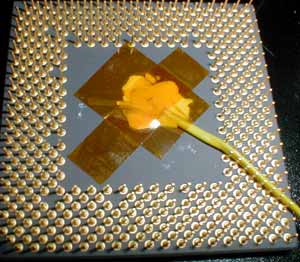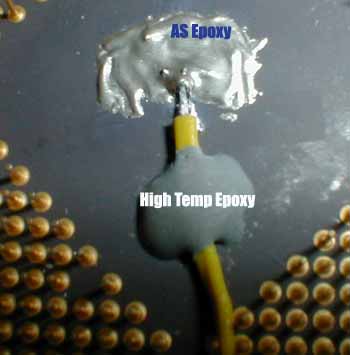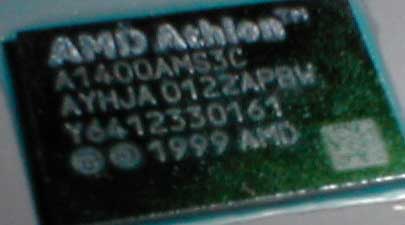|
|
|
|
 Autopsy of a review - Cool Innovations Vs SK6 Shootout Review Autopsy of a review - Cool Innovations Vs SK6 Shootout Review
|
|
Date Posted: Jul 18 2001
|
|
Author: Joe
|
|
|
|
|
Posting Type: Review
|
|
Category: Air Cooling Reviews
|
|
Page: 1 of 1
|
|
Article Rank:No Rank Yet
Must Log In to Rank This Article
|
|
|
|
|
Note: This is a legacy article, imported from old code. Due to this some items on the page may not function as expected. Links, Colors, and some images may not be set correctly.
|
|
|
Autopsy of a review - Cool Innovations Vs SK6 Shootout Review By: Joe
|
|
Autopsy of a Review - Cool Innovations Vs SK6 Shoot out Review
|
|
This is a definite first, an article talking about the flaws of a review the site did. This may point out how anal I am on reviews and data, and also give you some background on what I am doing to fix the issue for future reviews. This should also give you an idea of how to monitor data on your own systems.
ProCooling posted a review/shoot out on 3 HSF's on 7/13/01 . This was a first review of its kind on procooling. Using new testing methodologies, new testing gear, and over all working out bugs in the testing setup. Not everything went as planned. The first round of tests resulted in some off data. As well as a bad heatsink sample I received. Below I will be outlining the flaws and the fixes in the review and also showing improvements on the testing setup. I would highly recommend reading the HSF shootout before reading the following or it may not make much sense.
|
|
One of the biggest disappointments in the review is the fact that the thermocouple came out of contact with the core at some point. This was caused by the heat up of the core with the adhesive on the tape I was using, it essentially could not cold the probe on the core that well when the core got hot. Here is an example of the thermocouple before:
|
|
|
|
|
|
As explained in this How 2 article on putting a probe under the core of your CPU, I attached the thermocouple with some tape meant for this. Along with a glob of Dielectric thermal paste to aid in the heat conduction to the probe.
Only issue is the Silicone in the paste worked as a solvent against the adhesive and under temp would allow the tape to just peel off the bottom of the CPU.
Once the thermocouple looses contact with the base of the core its no better then a Motherboard probe.
|
|
|
|
|
This was a first attempt. This was an interesting test. I used some high temp/high strength epoxy for the main strength of the hold, then AS Epoxy on the thermocouple itself. There's a reason I didn't coat the thermocouple. Its cause of the conductivity issues it has. I used it JUST on the front bulb on the thermocouple and not on the wires.
Thermocouples work on varying Milivolts at different temps. Using AS Epoxy on the wires could short circuit slightly the thermocouple throwing off the readings.
This ended up not working too great. the High strength epoxy let the probe wire move too much and I could not keep the probe in contact with the core.
|
|
|
|
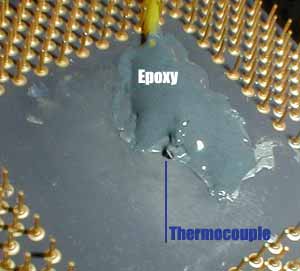 |
|
|
|
|
|
|
To make the epoxy hold the thermocouple hard against the core, I broke off all the original epoxy I put on ( you can see I missed some AS Epoxy). I then coated the entire length right up to the thermocouple with this dielectric high strength epoxy. Leaving the thermocouple exposed and solid against the CPU Plate.
|
|
|
|
|
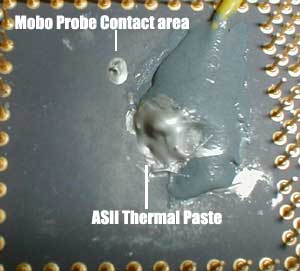 |
|
|
I then coated the exposed thermocouple bulb and under it with ASII thermal paste. This kept the paste from interacting with the wires leading to the bulb, and gave the probe a real nice thermal interface with the CPU plate.
Also you can see the Mobo Probe contact area. This is so I can use both in the tests.
|
|
|
|
|
|
|
Besides for the improved Thermocouple contact with the core initially, it will remain at the same location test after test ensuring consistent numbers across the board. This is also fixed to a AMD TBird 1.4Ghz core supplied by KDComputers. This will allow us to get temp readings at a spectrum of wattage's, and core speeds.
|
|
|
Also, for testing HSF's I have changed over to using my KT7A instead of my insulated KT7E. The Neoprene, and silicone under the core on the insulated KT7E ( for the pelt tests in the roundup), gave temps much higher then a normal user would expect. This is maybe not the most scientific way of getting data but it makes the data a little more "true" for you to be able to compare with your own data. The waterblock tests will still be done on the insulated KT7E.
|
|
|
|
In the HSF shootout with Cool Innovations and the SK6 TheCu Clad bottom HSF was if real interest on how they built it, and how good it really was. In the end after redoing some of the tests the Cu Clad HSF came out better then the Al. pin HSF, but not much better then the SK6.
One night while geeking, I was talking with Dave @ KDComputers about this mysterious HSF. So we proceeded to cut the damn thing in half and smash it on the ground after freezing it :) Here were the results:
|
|
|
|
|
|
|
|
|
|
|
|
Dave has for a long time told me about the questionable quality in Cool Innovations products and I had yet to see any so I didn't really take what he said to heart. The Cu Clad base HSF looked high quality from the outside, and cutting it in half revealed no suprises. The HSF would have been much better if it was constructed like a Alpha or Tiasol HSF is with a Cu inset placed and secured in the base with heat. This base is simple glued on. But what kind of Glue?
I figured it was Arctic Silver Epoxy, I have not asked Nevin at AS about this, but its just what I thought.
So.. lets freeze the beyatch and then go and throw it on the ground.
|
|
|
|
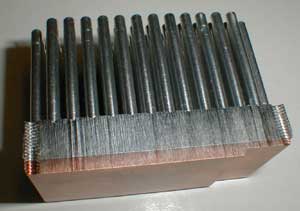 |
|
|
|
|
|
Al. Side
|
|
|
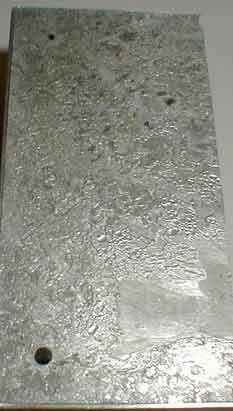 |
|
|
Cu Plate
|
|
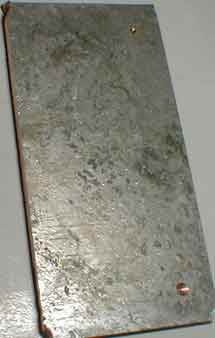 |
|
Well the results were interesting. It looks and feels JUST like cured AS Epoxy. And a REAL sloppy job of doing it at that.
There is not a REAL smooth contact surface anywhere as you can see the air gaps and areas of no conductivity.
|
|
|
|
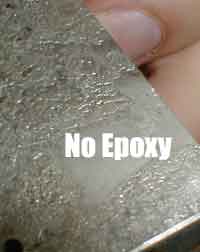 |
|
|
|
|
|
|
The Plates snapped off with a simple shock of hitting the ground, I personally tried with an old Alpha PEP66 I have and I could not get the Plate to come out or even mis align under anything I did. Alpha and Tiasol do NOT use this method of attachment, They use an Extrusion - Heat/Chill process to insert the inlay in the base. Not just glue it on like CI does.
The Massive air pocket showing there was little if any thermal conductivity going on for this area.
|
|
|
|
|
|
|
On the 462 Socket A version of this chip ( he bigger one- similar to the MC462 that swiftech sells but this one is Al. with a copper base instead of all Cu like swiftech.) Dave's cautions about their questionable quality are proved.
|
|
 |
|
 |
|
|
|
|
Not only are the visible gaps there, and on all 4 sides. But the plate is on an angle! This is nasty bad for your core, unless that is you don't like a flat contact area. The QC of these blocks are questionable at best it seems.
The Al. pin HSF I reviewed was a bad one. We put on another one and it performed much better. This points out the lack of consistency in Cool Innovations batch runs. You may get a good performing high quality block, but unlike ThermalRight, Vantec, or Tiasol, every HSF from Cool Innovations may be slightly different and maybe better, or maybe worse then what you saw on here.
From looking at the stock pile of these Al. pin HSF's at KD Computers we found some that had the bottom brushed/milled in one direction, but then others in the opposite direction. The HSF I tested was one of the odd ones milled in the different way.
Basically what it comes down to, is I feel that if you read the review and got an idea that the Cu Clad HSF is a good HSF, it may be for the sample I had. But you cannot be sure what the others will be like as they don't seem to offer that detailed of a QC in their company. This may seem like I am slamming them, but I am simply trying to clarify some aspects of the review that became apparent after the fact that the readers deserve to know.
|
|
|
|
|
|
|
|
|
|
|
Closing -
|
|
|
This is all part of ProCooling looking out for our readers, and doing everything possible to get the most accurate and useable date for the public to use. While we are at it, we are going to snif out bunk products and let you know clearly what is bad about them. Politically its not the best thing to do to get products from MFG's... yes we know this. Hell AMD won't send us silicon after we showed how to OC on the Tyan Thunder K7 board! That's one of many things we have done that have helped you, but prolly pissed off some other people :)
But who cares. We are not here to make friends with everyone, we are here to cool stuff and tell you how to cool it also. We're here to show you what to do and what not to do, and how to do it the most cost effective way.
This last week is a turning point for ProCooling. Our goal is nothing less then to become the centerpiece of hardware cooling and thermals for geeks on the web. Watercooling, Freon Cooling, HSF Cooling, among many other emerging technologies. It's an ambitious stance but we are already well on our way there with the help of our readers, and teamwork / fellowship with many companies and the leading geek sites on the web.
|
|
That about wraps this article up, If you have Questions please post them on the Pro/Chat or Pro/Forums, or Email Joe directly.
|
|
|
|
Articles Home |
|
|
|
| Random Forum Pic |
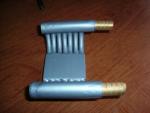 |
| From Thread: Post pictures of your homebuilt blocks here! |
|
| | ProCooling Poll: |
| So why the hell not? |
|
I agree!
|
 67% 67%
|
|
What?
|
 17% 17%
|
|
Hell NO!
|
 0% 0%
|
|
Worst Poll Ever.
|
 17% 17%
|
Total Votes:18Please Login to Vote!
|
|






 Autopsy of a review - Cool Innovations Vs SK6 Shootout Review
Autopsy of a review - Cool Innovations Vs SK6 Shootout Review
